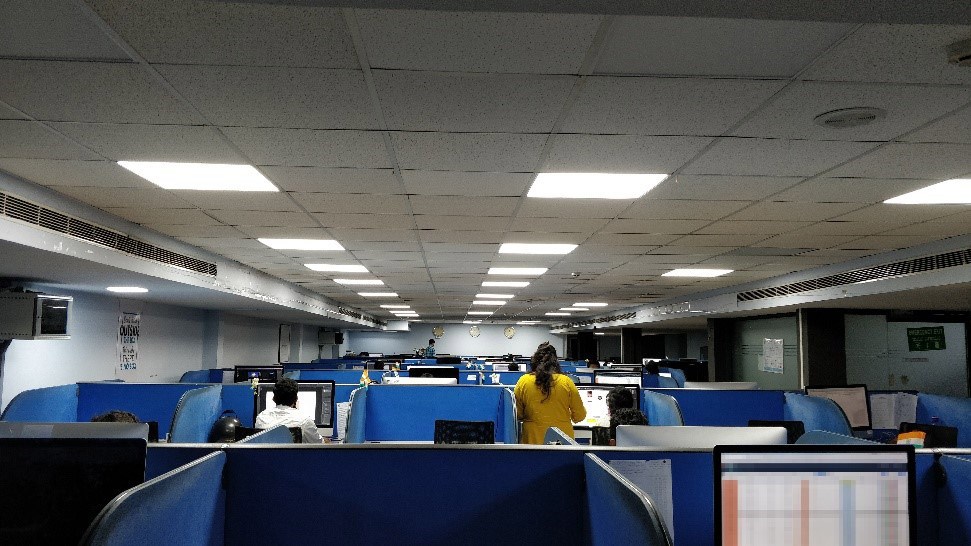
Introduction :
21st-century humanity is a digital image civilization. This may seem obvious to Millennials who grew up with smartphones and social media, capable of taking and storing unlimited pictures and videos forever. Commercial photography has gone almost completely digital and The Rise of Image Post-Processing Industry, both in shoots and post-production. Like most of the digital age, this transformation in commercial photography is a little over two decades old. Before that, commercial visual image production was a largely centralized activity, from planning and shooting the images to the pain-staking, slow, highly creative process of post-production (i.e., editing, special visual effects, and composition) involving scissors, glue, and even tabletop chemistry.

Figure 2: Developing film and post-processing of images was an arduous task before digital photography.
In the decades which followed, cheaper, more convenient digital cameras overtook film, and the post-production value chain transformed into a computer-based, replicable process. In the process, it gave birth to the global Image Post-Processing industry.
Modern Image Post-Processing Industry
Ever since Kodak pioneered the software outsourcing business model in the late 1980s. Every industry raced to incorporate outsourcing into its supply chain to achieve greater efficiency. The commercial photo industry achieved this in the late 90s. Assisted by the rise of industry-leading tools like Photoshop and access to high-speed internet. Soon image and video post-processing companies emerged all over the world, particularly in India, the Philippines, Eastern Europe, and South America. A few were fully owned subsidiaries of the parent US or European companies, but most were independent vendors.

Figure 3: A typical work floor in a Tier I image editing vendor. Expect flexible volume capability, high work quality, and a global outlook that ensures transparency.
In the last 20 years, the image post-processing industry has become a complicated matrix of capability hierarchies, niche specializations, technology literacy, business sophistication, and professionalism. While expertise and capabilities vary between each company, the best Tier I operators are large, sophisticated setups in their own right and can help companies achieve most or all of the following:
- Deep domain knowledge of standards and aesthetic preferences in fashion, ecommerce, food & beverage, etc.
- A high degree of volume flexibility to suit companies’ cyclical or business needs;
- Expertise in multiple state of the art tools such as image editing, 3D, illustrations, publishing, etc.
- High-quality talent to brainstorm original ideas for effect creation
- Cutting edge software skills in AI, automation, quality control, etc. to achieve high levels of cost and quality control; and
- In-built transparency of workflow, costing, and access to decision-makers to resolve issues.






Figure 4: A few of the services that image post-processing vendors provide: ghost mannequins, image retouching, creative retouching, original compositions, and 3D renders. Image post-processing experts are professionals who strive to deliver the looks their clients ask for rather than imposing their own standards of beauty or aesthetics.
How to Choose your Vendor
The most important thing to remember when choosing your vendor is that they work for you! If a vendor cannot meet your volume needs, yearly cyclicity demands, or skill level to achieve your delight, they don’t deserve you!
Today’s image post-processing industry is heavily fragmented. On one end, there are thousands of low-volume vendors, including freelancers and small businesses. Some are niche specialists, but most do low expertise but time-consuming work which is increasingly getting automated, especially with AI. This has driven such small operators to offer bargain-basement pricing. But it is often offset by poor workflow management, leading to missed timelines, poor quality of work, or customer service.
On the other end are a few large, sophisticated companies. These Tier I operators can process millions of images a year, offer expertise in multiple domains, are expert users of advanced software, and are transparent in their workflow management and customer service. They can also bring in business model flexibility and offer economies of scale across a wide range of volumes.
In general, however, the need defines the right vendor. If your need is simple and low volume, or if the work isn’t particularly critical, you may want to look for a vendor who can handle the work with basic instructions, has a decent track record, and can offer a good price. Then again, you may want to look into doing the work yourself with Photoshop or with something even simpler or free.
If you have a recurring need for professional quality and hassle-free customer experience, it is time to look for a vendor whose business model can cater to your needs. We suggest asking the following questions:
- For a Bulk rate, what is the minimum order quantity?
- How do you set up your teams to handle small orders?
- How can I be sure you won’t de-prioritize my work for a larger order?
- Can I get a dedicated team to work on my project?
- How will you ensure transparency of the workflow? Will I receive my work back in time?
- Do you offer any kind of free trial so I can be sure I like your work before I commit?
- What kind of data security and compliances do you have in place?
- What is your track record? Can you provide references for the kind of work I need? Is it ok if I contact them?
Conclusion
Professional quality image editing is a key cog in the wheel to produce images that evoke emotions and spur action. The Image post-processing industry is evolving quickly, adopting new technologies like AI to further streamline workflows and processes and helping create images that give clients exactly what they ask for. As a client, quality is your top priority, followed by a great value for money. Choosing a Tier I vendor like Manipal Digital Systems can be a great first step in setting up a hassle-free process that helps you focus on building your business, secure in the knowledge that when you start afresh day, your finished work will be waiting for you!



